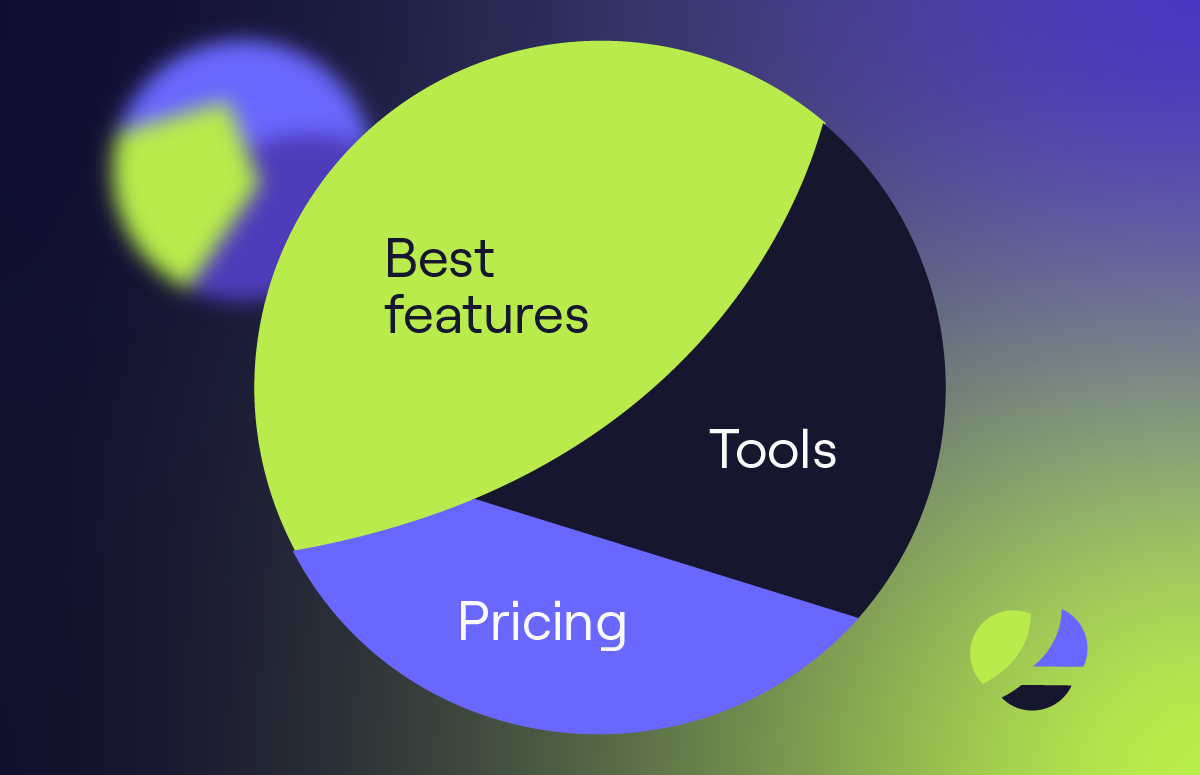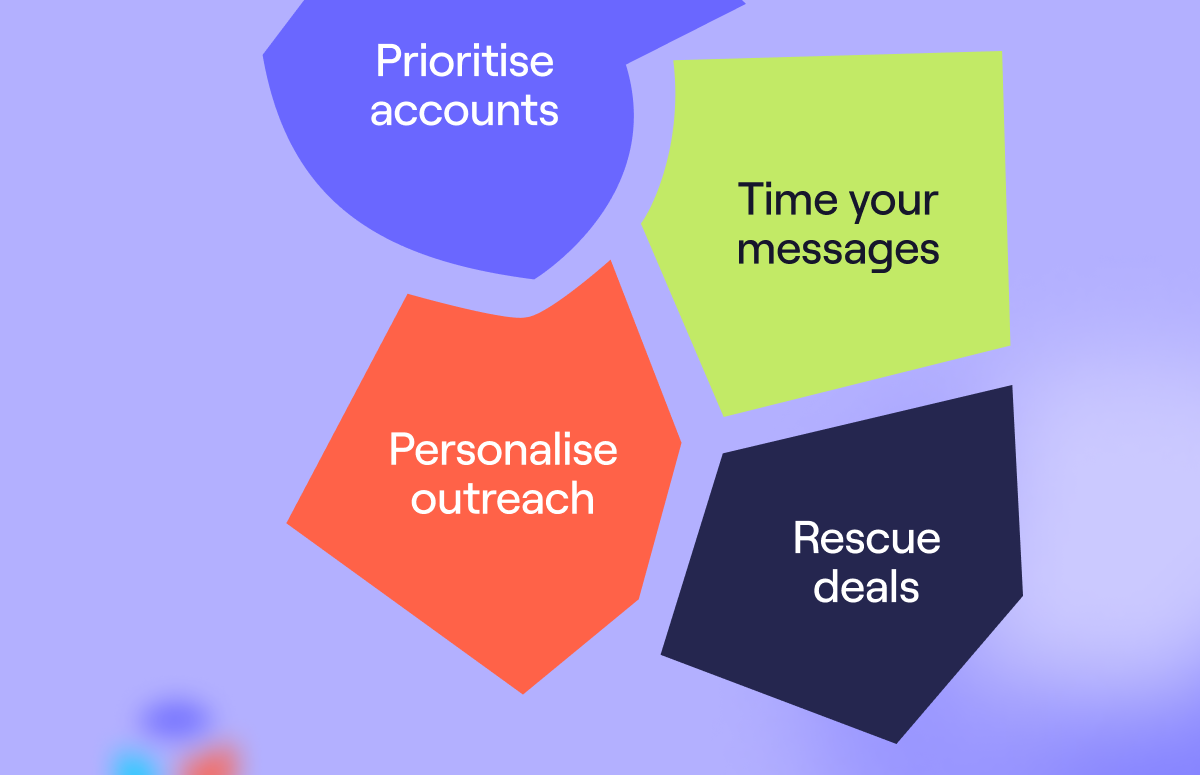Logistics Marketing for C-suite Decision Makers
Logistics marketing insights on this page:
Logistics marketing isn’t easy.
You have to contend with big-budget competitors, a large mix of players, and a wide variety of potential target customers.
Catching the attention of C-suite decision-makers is even harder.
We spoke to James Scrivener, Global Growth Marketing Manager at Stuart, to find out how best to reach and influence the right people when marketing to C-suite buyers of supply chain and logistic solutions.
Keep reading to find out what he said 👇
What does the world of supply chain and logistics look like today?
As in most industries, depending on the target customer - there’s a variety of competition in the logistics business space.
James explained:
“There’s the juggernauts like DPD and Royal Mail. Big brands with big budgets that are able to do some big campaigns for brand awareness.”
These larger organisations often manage large accounts for other big businesses, like John Lewis or ASOS.
James added:
“But you’ve also got the newcomers in quick commerce. Like Zapp and Gorilla - while they’re new players, they’ve also got big budgets.”
“So there’s a lot of big budgets, but most of these companies focus on quite traditional marketing methods.”
By traditional methods, James is referring to tactics like lead generation and in-person events, which are still very common practices in the logistics marketing industry.
James said:
“We’re a younger brand; I think that shows in our design style - it’s unique, which helps us to stand out. But we tend to follow traditional marketing methods like attending all the big industry events.”
James explained that this is still the industry standard and is one of the best ways to get in front of the right potential customers.
Reaching the logistics C-suite: The timing challenge
Again, depending on the size of the logistics businesses you’re targeting - there can be a wide range of ‘top dogs’ and decision-makers that you need to reach.
In those smaller organisations, it might be the owner and founder. In larger organisations, you’re more likely to have that more traditional C-suite set-up.
James said:
“When we’re going after retail and more enterprise-sized accounts, we tend to go after job titles that are a bit more specific. Like a Logistics Director or Chief Operations Officer.”
Timing is one of the biggest challenges with targeting C-suite members in larger organisations.
James explained:
“Getting in front of the right person at the right time with captivating content is a challenge. They’re very busy people, so you have to be concise.”
“Also being as personalised as we can, focusing on tangible results. For example, ‘This is what we have done for Tesco, would this be interesting for you?’.”
The timing challenges for logistics sales don’t end there - as often, there’s a seasonal aspect to supply chain and logistics marketing. Black Friday and the holidays are when online purchases soar.
James said:
“Peak season is coming up, and retailers are very keen to get a fantastic delivery provider in place for these times. But to get them on board in time for peak season, we need to contact them six months prior.”
Reaching these prospective clients as early as possible in the buying process is essential, as it allows more time for relationship building and educating potential buyers on what sets you apart from your competition.
Two key objections to overcome from logistics decision-makers
Inertia is often something that gets in the way of business deals - because if something isn’t broken, then why go through the effort to fix it?
Even if a company could make you more efficient, the general feeling is, ‘Why move? It’s not that bad… and it’ll be such a faff to be onboarded somewhere else’.
And that is a common objection in the logistics industry, too.
James explained:
“For example, when we target restaurants, we’re coming up against established businesses like Deliveroo, Uber Eats and Just Eat.”
“Trying to get them to change their mindset and move away from something they’re used to using is a bit of a challenge.”
Another common reason for resistance is the complicated B2B tech and the fear of not getting integrations set up properly.
James said:
“The integration process can be quite time-consuming and does require resources on both sides.”
Unfortunately, this makes fighting inertia even harder, as the perceived level of effort to change is higher. Making James’ and his teams’ role of educating logistics marketing prospects on their value even more important.
Back to James:
“We really try to hone in on what our USP is and what benefits we can bring to our target accounts so that there’s a compelling argument to move over to Stuart.”
Two logistics marketing campaign examples for decision-makers
1. ABM, LinkedIn ads and RFPs
As mentioned earlier in this article, traditional B2B marketing strategies are still prevalent in this industry.
James said:
“We do a lot of outbound and ABM. And we have long-form content gated on our website.”
James went on to explain that they start with a one-to-many approach to ABM, with around 200 accounts they’d like to reach with brand awareness ads before retargeting logistics sales leads that engage with a gated content ad.
For example, a detailed case study on how they positively impacted another organisation. This would likely be followed up by a proactive RFP (request for proposal).
James said:
“Once we have their email address, we might send an RFP.”
“We take a standard template for RFPs, tailor it to the specific account we’re targeting and then send it directly to a decision-maker. That worked well in the past with companies like Nike and Adidas.”
However, James and the team don’t expect an immediate conversion off the back of this logistics marketing activity.
Instead, they view this as valuable content that their buyers will hopefully remember when they reconsider their contracts.
James said:
“We’d often get replies saying, ‘Unfortunately, we’re still in a contract with X competitor for X number of months, but when that’s up, you’ll be first on our list to reach out to.’”
“So we treat this as a way to get our foot in the door and start a relationship with C-suite decision-makers.”
With this in mind, for larger retailers, Stuart tends to focus on longer-term relationship building, trying to secure deals with larger accounts because, in the long run, they provide a better return on investment.
2. Cost-saving calculator
The buyer should always be at the forefront of any marketing decision-making. We can’t force buyers through nice, neat funnels or get them to make decisions they’re not ready to make.
But what we can do is reach them early enough in the logistics sales process and start drip-feeding them educational content that teaches them about the problems you solve and how you can help them reach their logistics business goals.
Which means deeply understanding the personas within each target industry. And then delivering tailored content based on their needs and pain points.
James said:
“We always try to focus on what our buyers want to achieve from a partnership. This can be very different from vertical to vertical.”
“In retail, it tends to be the quality of service and sustainability - so we make sure our messaging shouts about our sustainability credentials, our courier partners and how great they are.”
“Whereas in food delivery, the buyers are mainly interested in cost savings. So our messaging becomes centred around how much we can save them.”
James and the team at Stuart discovered that often, these big food delivery providers like Uber Eats and Just Eat, were charging 30% commission and that this was a huge pain point for them.
So they came up with a logistics marketing campaign highlighting how much money they’re shelling out in commission to these businesses while also demonstrating how much they could save in the switch to Stuart.
James said:
“We created a cost savings calculator that allowed our prospects to add in:
- Their average basket value.
- How many deliveries would they do in a week?
- How much were they being charged in commission?
- And how much they charge their end customers.”
“Once they’d done that, it would calculate how much they’d save by switching to Stuart. This was really successful. Having a piece of content that gave a monetary value really got them hooked.”
“We’ve now scaled this into all six countries we operate in.”
In another instance, the team at Stuart discovered that other delivery providers capped their delivery distance at 2.5 miles. Whereas Stuart capped their delivery distance at 5 miles, meaning their customers could then have an opportunity to reach a much wider audience.
Three logistics marketing channels to reach decision-makers
As with many B2B decision makers, lots of them are on LinkedIn. So, targeting digital supply chain and logistics is relatively easy. And for those that have an online presence like this, email is another logistics marketing strategy that tends to perform well.
James said:
“We usually get quite positive results from email marketing as long as we are doing something quite personalised. So it’s more like a one-to-few approach.”
However, if, like Stuart, you’re sometimes targeting smaller businesses - like restaurants - they often don’t have a presence on channels like LinkedIn. They’re much harder to target in general.
James explained:
“The food SMB audience is really hard to reach online. They often don’t have a usual business structure as the owner is usually running the whole show.”
“They often also have a small social media presence, which means it’s hard to find their email addresses online. Making it difficult to reach out to them.”
In these cases, Stuart has had to resort to more physical logistics marketing strategies, such as dropping flyers through restaurant doors.
However, whether reaching smaller businesses or larger retailers - there’s one channel that’s still alive and well in the supply chain and logistics industry - and that’s events.
James said:
“Events is a powerful logistics marketing channel that we tend to use. We’ve found it helps us to get in front of the right people in the logistics industry at the right time.”
“We don’t host events ourselves; we just attend the big events in the industry and have a booth where we can speak to our ICP .”
Logistics marketing: the last word
Reaching and catching the attention of prospects is difficult, and even more so when they’re as busy as C-suite members tend to be.
However, buyers are looking for shortcuts. They want it to be easy to find a solution. One that can help provide a better quality of service or cut their costs.
Drew Leahy, Head of Product Marketing at HockeyStack, told us:
“In complex buying situations, buyers have lots of options, and they want anything that will make that decision-making process faster and easier.”
Thus, reaching buyers as early as possible, building trust and drip-feeding compelling evidence as to why you’re the right distributor (like the cost-saving calculator!) can help you stand out from the sea of competition.
For more sales and marketing insights, tune in to The Loop podcast 👇



